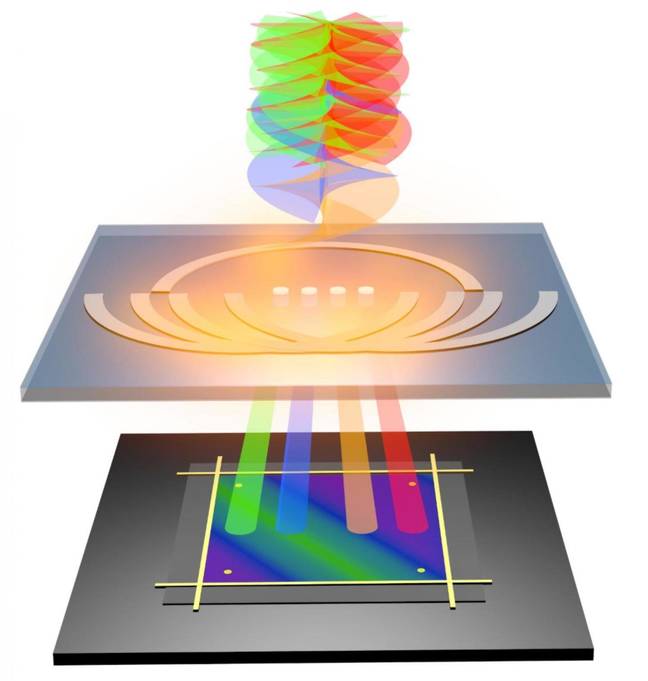This article is more than 1 year old
Have you ever, ever felt like this? Have strange things happened? Is high-speed data going round the twist?
Oz boffins swivel light to cram up to x100 more data in fiber
One of light's stranger characteristics – the ability to give its wave propagation a “twist” – has taken a step closer to practical application, and could be used to increase fiber-optic network speeds a hundredfold.
The twisting of light involves something called orbital angular momentum, or OAM. It's possible to give a light a helical wavefront, effectively twisting it, and encoding information in the properties of the resulting emissions. Crucially, it is possible to twirl beams of light without causing them to interfere with each other, allowing more data to be squeezed down a glass fiber line.
For example and simply put, a beam of light with a clockwise modulation, and a second beam with an anti-clockwise modulation, can share the same fiber without interfering with each other, doubling the bandwidth: there's now twice as much information flowing through the channel with two beams along the same line of propagation.
The ability to drive light 'round the twist was confirmed in the 1990s, and the first demonstration of OAM for high-speed data-networking – that we're aware of – occurred in 2012 using radio waves. Since then, researchers have been working to improve detection of the twists of light, thus creating more OAM channels, and shrink the technology down so it can be practically used in data-center switches.
Now, just this week, the Royal Melbourne Institute of Technology in Australia has published details of its efforts in this endeavor in the journal Nature, demonstrating a CMOS-compatible OAM detector.

Schematic shows how the RMIT device works: "twisted light" is turned into multiple individual beams sent to the detector. Image: RMIT University. Click to embiggen
That, according to Dr Haoran Ren, joint lead author of the paper with Zengji Yue, replaces a setup “the size of a table, which is completely impractical for telecommunications," with a tiny sensor: "By using ultra-thin topological nanosheets measuring a fraction of a millimeter, our invention does this job better and fits on the end of an optical fibre.”
Dr Ren told The Register the group's experiment successfully detected four discrete OAM states, and they've simulated detection of ten states.
Coauthor Professor Min Gu, director of the university's Laboratory of Artificial-Intelligence and Nanophotonics (LAIN), added: "We could do 100 states," which would sweat an awful lot of extra bandwidth out of existing fibre.
Dr Ren explained the nano-scale detector “is designed to separate different OAM light states in a continuous order, and to decode the information carried by twisted light.”
The researchers constructed a 100nm film out of antimony and tellurium, which they wrote works as a “plasmonic topological insulator material,” and can detect OAM-encoded data with less than -20dB crosstalk between channels. Prof Gu said creating a silicon-compatible detector should make it easy to scale-up the technology for telecommunications applications, yielding as much as a 100 times capacity improvement “within the next couple of years." ®
